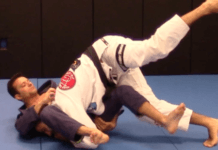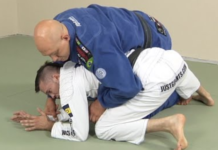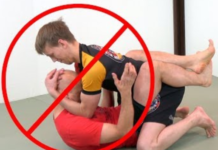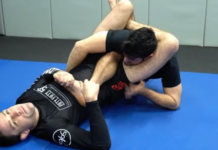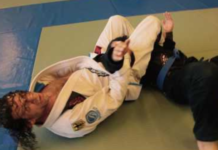The toe hold is not a move that’s regularly used in BJJ competitions and rolling sessions on the mats, especially at beginner level. There are a few reasons for this and we’ll get to them later. But the fact of the matter is that this can be a devastating move that you can learn and apply while you roll with other practitioners. In this article, you will find out some more information about how you can setup this move and how this move actually works.
The basics of the Toe Hold
This move is a submission that will put a strain on a few key ligaments and joints in the lower leg of your opponent. The way to perform this move is similar to a Kimura lock. You will need to grab the end of the foot of your opponent with one hand, then slide your other hand under the shin of your opponent and grab your other arm at the wrist. This is the toehold submission and once you get to this position all you will need to do is twist your opponent’s foot. In the IBJJF Rule set toe hold is usable only in brown and black belts.
Is the Toe Hold a dangerous move?
The answer to the question above is an emphatic “YES”. This is the first reason as to why many BJJ instructors discourage the use of the toe hold. The ligaments and joint at the foot are especially vulnerable to the application of twisting forces over them and they can easily get damaged in the process. Sadly, there are many instances when people have experienced damaged ligaments and joints – the knee joint is also vulnerable to this move if you can twist the foot far enough out of the axis.
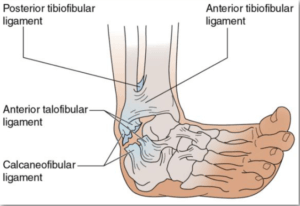
And this is why you want to be very careful when doing this move. Many of the instructors that support and encourage the use of this move would still tell you to just get to the position without doing the twisting, while you roll in training sessions. Of course, if you get the chance to do this move in competition, you will have to twist the foot and risk injuring your opponent – it will be his responsibility to tap out in time. But if you use this move while sparring, then make sure that you don’t over-twist your opponent’s foot and cause injury. The same goes in the opposite case – tell your opponent to be very careful if he’s known for using the toe hold. And make sure that you do away with your ego and tap out if you feel like your opponent has put the toehold lock in place.
The reason why this move is so dangerous comes from the fact that it can cripple your opponent if you perform it right. This gives credit to the effectiveness and power of the move. Always be sure to be very careful when you apply it and when you defend it because of this reason. If you can do these things – then you will see that the toe hold can be a very effective but still safe submission.
Doing the Toe Hold
One of the easiest ways in which you can do this move is from the top knee-shield position. If you sense that your opponent’s knee shield is stable and that you can’t pass it – then you always have the option of turning to the side and grabbing his foot with one hand and placing the Kimura lock on it. Then it will be very easy for you to finish the move and tap your opponent out.
What you will see in this position that your opponent will have to respond to this by pulling his leg away so that you won’t be able to finish the toe hold. But this means that he will do away with the knee-shield and he will give you the room to enter half-guard or even pass to side-control. There are also many other positions from which you can apply the toe hold – your imagination is the limit when it comes to this.
Variations of the Toe Hold
- Standing Toe Hold: Instead of initiating the toe hold from a ground position, this variation is performed while both practitioners are standing. It involves trapping your opponent’s foot and applying the same principles of twisting and torquing to secure the submission. This variation is particularly effective in takedown scenarios.
- Inverted Toe Hold: As the name suggests, this variation is executed when the roles are reversed, and you find yourself caught in your opponent’s guard or on the bottom position. By utilizing flexibility and precise foot placement, you can surprise your opponent with an inverted toe hold, potentially turning the tables in your favor.
- Toe Hold to Leg Lock Transitions: Skilled practitioners often chain submissions together, seamlessly transitioning from one technique to another. The toe hold can serve as a precursor to other leg locks, such as the heel hook or kneebar. By combining these techniques fluidly, you can keep your opponent guessing and increase your chances of securing a submission.
Defending the Toe Hold
If your opponent grabs the toe hold – then you’re screwed (for lack of a better word). The reason for this is that you will not be able to generate enough force to block the twisting of your foot. Your opponent will use both his arms to twist your foot and the foot is simply not strong enough to counter this. So, your only choice here is to tap out in time.
But if you wish to not get caught with the toe hold – you need to be in full awareness of your feet. If your opponent senses that your attention is caught up elsewhere – then it may already be too late. But if you’re aware that your opponent may at any point in time grab your toe for the toehold – you will be able to react speedily if he goes for it and pull out your foot from imminent danger.
Counters to the Toe Hold
- Preventative Foot Positioning: Being proactive with your foot positioning can significantly reduce the likelihood of falling victim to a toe hold. By keeping your toes flexed and tucked, you minimize the exposure of vulnerable ligaments, making it more challenging for your opponent to secure the necessary grip for the submission.
- Foot Escapes: If you find yourself caught in a toe hold, there are several escape routes you can explore. One common method is to rotate your foot in the opposite direction of the twisting force, which can alleviate pressure on the targeted ligaments. Additionally, you can attempt to strip your opponent’s grips by using your free hand to peel their hands away from your foot.
- Counterattacks and Reversals: A skilled practitioner can turn the tables on their opponent while caught in a toe hold. By maintaining composure and swiftly transitioning to counterattacks, such as attacking the leg your opponent is neglecting, you can shift the momentum of the match in your favor.
- Verbal Communication: Communication is vital, especially during training sessions. If you feel your opponent applying excessive pressure or suspect an imminent toe hold, verbalizing your discomfort and intention to tap can prompt them to release the submission before injury occurs. Open lines of communication foster a safe training environment for all practitioners.
Remember, while the toe hold can be a potent and dangerous technique, it should always be used responsibly and with utmost care for the well-being of your training partners. Proper technique, controlled application, and respect for your opponent’s safety are essential aspects of practicing Brazilian Jiu-Jitsu.
Check also:
- Heel hook: How to Do and Defend this Leg Lock
- Calf Slicer: Extremely Painful Submission
- Basic Jiu Jitsu moves every white belt should know
- Rubber Guard Basics: What is it and Most Effective Moves


